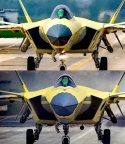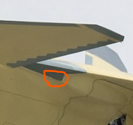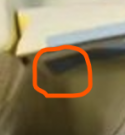AVIC has yet to do a full single piece carbon fiber fuselage or a full single piece carbon fiber wing, and we all know about carbon fiber’s problems with fatigue and crack tolerance for these large highly loaded single piece parts, so Boeing and UAC must be blowing smoke!Those foreign planes are designed long ago but their manufactures did not stop improving them by attempting 3D printing. They tried and failed, and still couldn't do it after more than 10 years.
One example is AeroMet who tried low volume production of many load bearing 3D printed components for F/A-18E/F in 2001, being the FIRST in the world to do it. Even after HIP and open-die forging post-treatment, the components were proven to be far inferior to forging process in performances such as fatigue. AeroMet went bankrupted in 2005.
Wang Huaming used AeroMet as the example in both his presentation video and paper (2009) to tell his achievement that he did what AeroMet failed. Maybe Tirdent is from AeroMet, the wound is so deep that he can not believe that this challenge is beaten by someone else.
You are using an out of date browser. It may not display this or other websites correctly.
You should upgrade or use an alternative browser.
You should upgrade or use an alternative browser.
J-20 5th Generation Fighter VII
- Thread starter siegecrossbow
- Start date
- Status
- Not open for further replies.
That is the line of thinking by Tirdent. I asked him in the same manner as you about his thought if it was F-22 using 3D printed bulkhead instead of SAC. But yours is better as it is fact rather than hypothesis.AVIC has yet to do a full single piece carbon fiber fuselage or a full single piece carbon fiber wing, and we all know about carbon fiber’s problems with fatigue and crack tolerance for these large highly loaded single piece parts, so Boeing and UAC must be blowing smoke!
Quite badly off topic but I remember reading that F-22 initially was designed with composite wing spars, but the design team changed those to titanium after the Air Force deemed the composite ones having insufficient performance when hit by guns (Gsh-301 and such I presume), and of course the titanium design is heavier.AVIC has yet to do a full single piece carbon fiber fuselage or a full single piece carbon fiber wing, and we all know about carbon fiber’s problems with fatigue and crack tolerance for these large highly loaded single piece parts, so Boeing and UAC must be blowing smoke!
Just goes to show that sometimes the military will tend to stick with more traditional/dated designs due to reasons that, with hindsight, may not warrant that much consideration. Maybe similar reasons are partially behind why other countries doesn’t seem quite as interested as China in pushing for additive manufacturing in aircraft design.
One of the biggest components of the engineering process is risk assessment and requirements setting. Most designs you see out in the world don’t use the most advanced materials and production methods possible, but what is appropriate for the sought after requirements. Advanced methods and materials are typically only adopted insofar as their characteristics are well known, and that’s often dependent on how extensive and thorough your R&D pipeline is for that particular method or material. Sometimes a better technique comes along but you’re already so much more invested in an older tech tree that you don’t spend as much resource developing it, or even when you do when it comes risk assessment time you still end up defaulting to the more familiar technology. And sometimes if you’re comfortable in your market position you let smaller players absorb all the risk to “prove” the technology and that then slows down development of that new tech tree. R&D is an essential competitive advantage but it’s also not a profit maximizing exercise, and without active state support or big financiers who are willing to lose money to push the cutting edge your R&D activity sometimes focuses more on iterating technology that’s safe rather than technology that pushes the frontier. This is why pointing to established players as the hard benchmark to what state of the art is is often a faulty argument.Quite badly off topic but I remember reading that F-22 initially was designed with composite wing spars, but the design team changed those to titanium after the Air Force deemed the composite ones having insufficient performance when hit by guns (Gsh-301 and such I presume), and of course the titanium design is heavier.
Just goes to show that sometimes the military will tend to stick with more traditional/dated designs due to reasons that, with hindsight, may not warrant that much consideration. Maybe similar reasons are partially behind why other countries doesn’t seem quite as interested as China in pushing for additive manufacturing in aircraft design.
Major differences in sensor layout on the outer air intakes, as well as the bulge, and the retractable lens. Some think that the bulge can be changed based on engine.Just the angle/lighting or the bump under the wing root looked different between the two?
Maybe that big bulge before the intake is also actually a bit more like the spine of the new J10. The bulge could be more easily upgraded with updated electronics and sensors without affecting aerodynamics.
What the proper name for that bulge please?
Last edited:
Major differences in sensor layout on the outer air intakes, as well as the bulge, and the retractable lens. Some think that the bulge can be changed based on engine.
Maybe that big bulge before the intake is also actually a bit more like the spine of the new J10. The bulge could be more easily upgraded with updated electronics and sensors without affecting aerodynamics.
What the proper name for that bulge please?
DSI bump.
I think what @no_name talked about was the wing root, while you are talking about the DSI "bump". There is no professional name for it, people call it (DSI) bump.Major differences in sensor layout on the outer air intakes, as well as the bulge, and the retractable lens. Some think that the bulge can be changed based on engine.
I agree, the change to the bump is very obvious. Here is the comparison. The bump on J-20 has metal ridge in the middle. J-20S has the frame around it without the middle ridge. J-20's bump seems to be constructed as part of the fuselage, while J-20S seems to have it as an separate piece mounted.Maybe that big bulge before the intake is also actually a bit more like the spine of the new J10. The bulge could be more easily upgraded with updated electronics and sensors without affecting aerodynamics.
What the proper name for that bulge please?
There is also another change to the inlet lip just before the hexagon panel. In J-20S there is a black patch unpainted or uncovered. I don't know if it is a change or it is merely in a stage before being fully painted. I have never seen any J-20 in yellow primer having that.
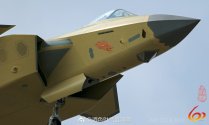
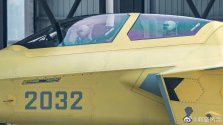
- Status
- Not open for further replies.

